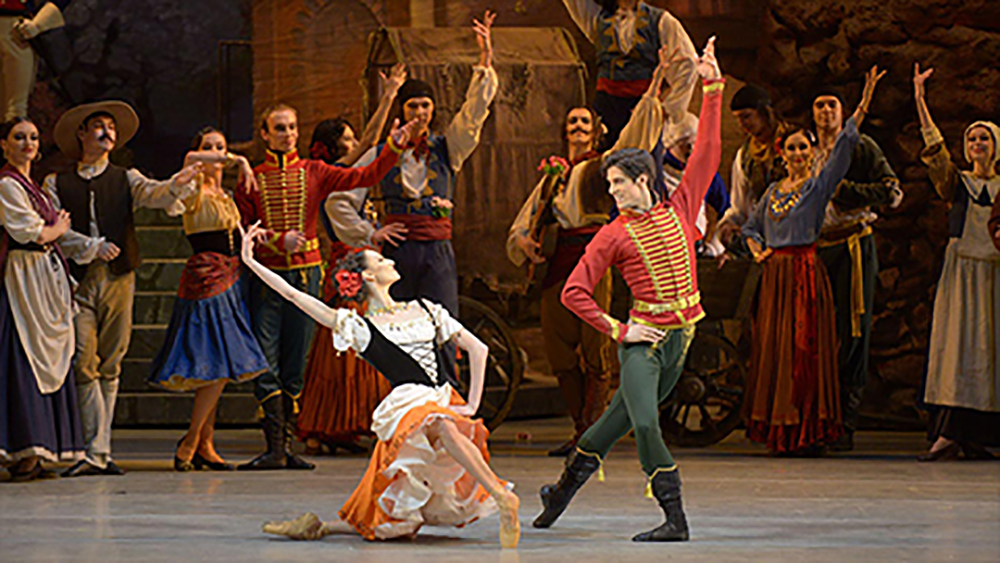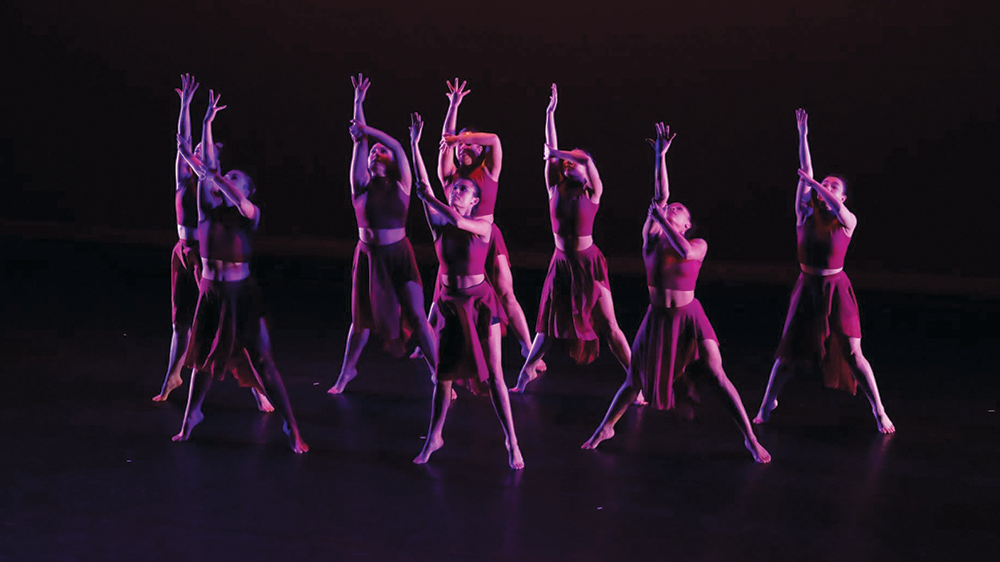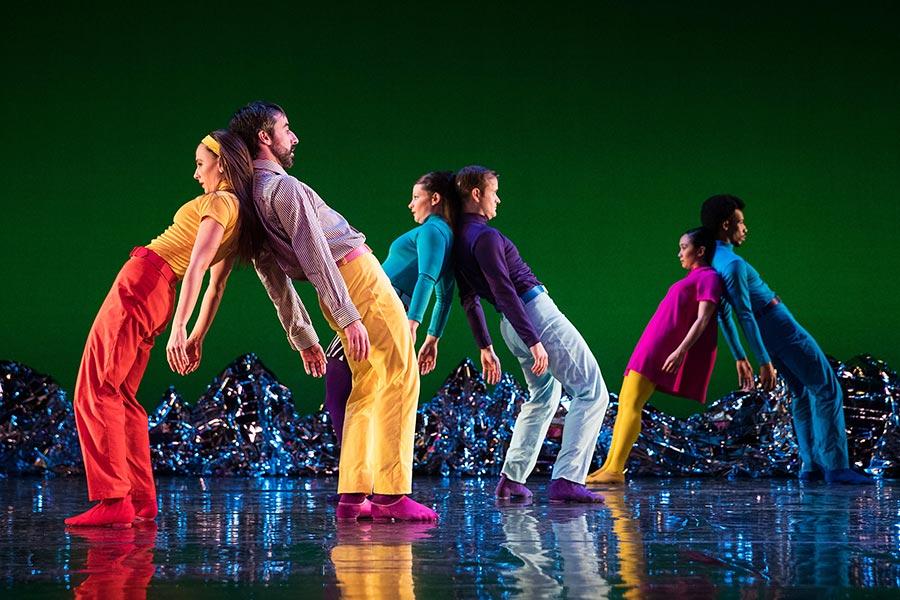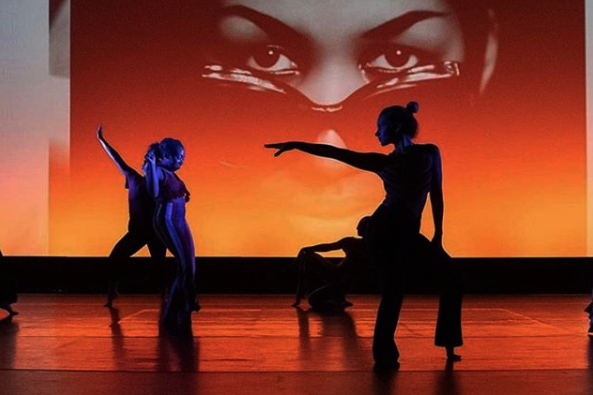Many contemporary audiences find classical ballet culture alienating, but the Mariinsky Ballet’s rendition of “Paquita” at the John F. Kennedy Center for the Performing Arts pushed the form of dance forward while making the language of ballet more accessible to a wider modern audience.
Last weekend, Russian ballet company Mariinsky Ballet performed “Paquita” at the Kennedy Center, decimating the barrier between elite ballet culture and the contemporary audience member. Choreographer Yuri Smekalov reimagines how to present the classical ballet to a new generation of observers, with the dancers refreshing the definition of ballet with engaging acting and eclectic performance.

Usually, ballet is entrenched in insider tradition: allusions to increasingly obscure fables, nods to famous choreographers only trained dancers notice and long bowing sequences with unclear significance. Ballet features no spoken words, but rather a code of specific hand gestures. Those viewers without a knowledge of the physical vocabulary of ballet must figure it out for themselves or hope that the performance program has a synopsis when it comes to discerning the plot. For many, ballet is simply an archaic secret code for which they do not have a key.
This adaptation of “Paquita” stood out for its acting and its ability to break the trap of inaccessibility into which most ballets fall. The dancers’ execution of the plot, particularly through physical comedy and emphatic gesturing, brought the audience closer to the hard-to-reach story.
At a professional ballet, viewers can expect to see pointed toes and turned-out feet. In that regard, “Paquita” was not technically perfect. The dancers at times lacked precision during the group numbers, but this fault did not matter during standout moments, like when audience members roared in laughter when two men in a horse costume did pas de chats, or quick rapidfire steps, across the stage. These new angles on ballet are necessary to increase the accessibility of the style, in an era when attention spans are limited.
Although most professionally trained dancers are not expected to also be talented actors, today’s ballet scene needs a generation of dancer-actors to keep the art form alive and lively. The Mariinsky Ballet has brought that generation to the stage as heart and humor filled the performance.
The reorchestration of the music by Yuri Burlaka and the artistic direction of Valery Gergiev also helped “Paquita” bridge the gap between classical traditions and the contemporary audience. The standard, string-oriented orchestra played fresh, flamenco-inspired melodies infused with the canonic score written in 1846.
The dancers used their heels to stomp, creating percussion with their feet and hands. As Paquita (Prima Ballerina Nadezhda Batoeva) performed fouettés, repeated whipping movements of the leg, the audience clapped along in rhythm. This revival of the original score created a more interactive and engaging experience for the audience and injected energy into this 21st century rendition of “Paquita.”
The original “Paquita” tells the story of a Spanish princess who is stolen by Romani people as a baby after the assassination of her noble parents and raised to dance on the street for money. As an adult, Paquita travels across Spain, dancing as her false mother collects coins behind her. Enamoured with her dancing, a young prince, Andrés, asks for her hand.
Headstrong and sassy, Paquita makes a deal with the prince: He can marry her if he gives up his life as a prince to live with her family. Andres agrees and joins the troupe as a performer himself.
The original story of Paquita relies on ethnic stereotypes that are not acceptable to a contemporary audience. Originally choreographed by well-respected choreographer Joseph Mazilier, the original 1846 “Paquita” represented an ethnic minority in a demonized way that has no excuse or justification.
The ignorant and harmful portrayal of Romani people is especially problematic. Smekalov’s reimagining dealt with this by simply using the word “peasants” in the program to describe Paquita’s kidnappers while also avoiding other problematic aspects of the original plot. While the Mariinsky Ballet did not entirely reimagine the story to take out the problematic material, it at least edited it to avoid further harming the ethnic minority that the original had turned into a static antagonist.
“Paquita” has been updated both for its content and performance, bringing the ballet to the present day by shedding some of its racist stereotyping and livening the dances with energetic, light-hearted touches.

















Doug • Oct 20, 2019 at 3:56 pm
It was most definitely a great performance. But your first sentence caught me, have you interacted with audiences who feel truly alienated by ballet? It seems like a lofty claim to make without providing examples. I’d be curious to hear about your specific experience and/or specific findings.